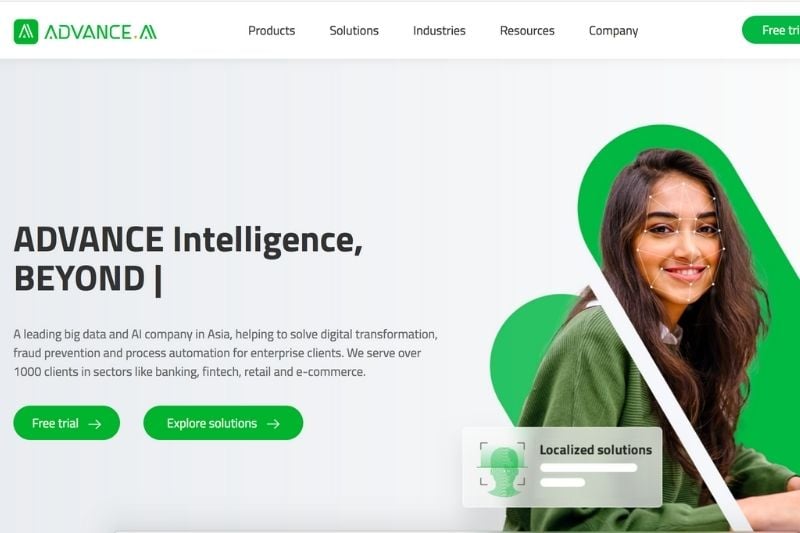The digitalisation of InsurTech is shifting how insurance companies operate, from open API to SaaS, to hybrid computing, here is our InsurTech in APAC 2021 trend forecast.
InsurTech is considered a relatively new concept and a subdivision of FinTech, but unlike FinTech, InsurTech is evolving at a much slower pace. Despite having insurance penetration rates fall to 3% since 2018, insurance firms predict the long term outlook to be positive, especially with China’s market growth. The pandemic has shifted a lot of industries, but it has helped InsurTech to become more prevalent– especially in the Asia-Pacific (APAC) region, the largest life insurance market. InsurTech is changing the insurance working sector, using smartphone apps, drones, AI, and other digital tools to improve customer service, analyse risk assessment, and make better predictions. Here are 8 InsurTech trends to look out for in 2021.
1. Open Insurance
InsurTech is data driven, constantly creating and combining more information to make business more profitable. Open insurance, also known as API (Application Programming Interface), is a concept where firms share data with their partners, communities, and startups. It involves integrating data with a third party, so a whole new application or programme will not have to be created for this integration. API thrives on an open, strong, and trusting partnership between customers and firms. The collaboration between AIA and WeDoctor is mutually beneficial, as those insured are able to use WeDoctor to better search for hospitals and medical care while also gaining access to AIA’s services. Implementing open insurance promotes innovation to gain business partners, and reach a vast customer base.
2. Low-Code
As insurance moves forward in digitalisation, more and more insurance firms are creating their own apps, the process of creating their own enterprise software and applications often requiring a lot of money. Low-Code allows insurance developers to produce applications without needing to code them from scratch, and gives developers the flexibility to customise and enhance their application however they like. It also cuts costs by eliminating the need for staff training, and improves customer experience as they are able to change and adjust settings to fit their customers’ needs. 59% of Australian organisations are adapting to low-code platforms; Australia-based Bendigo bank has partnered with Appian, a low-code automation platform, to create a more customer-centric service to satisfy user experience.
3. Customer Expectations
API is a universal platform for insurance firms, therefore, they cannot differentiate themselves based on their API interface alone. Instead, insurance firms need to compete using digital engagement and personal offerings as leverage to generate a larger client base. The digital transformation has opened many more opportunities and challenges for the insurance industry, especially with the shifting trend from a product-centric to a customer-centric approach. Because customer expectations have become a priority, insurance firms are targeting personalised experience to ensure satisfaction and retention. Insurance firms have to match up with society’s fast pace by providing information through just a few clicks and 24/7 customer service. ZhongAn insurance is an online-only ecosystem-oriented InsurTech company. Since 2017, they have sold over 9.5 billion insurance policies designed to enhance customer experience and gain loyalty.

4. Artificial Intelligence (AI)
The Covid-19 pandemic has moved interactions online, and for insurance firms to remain competitive, they have to find other forms of service, rather than traditional in-person sales practices. The use of XR (extended reality), a combination of augmented and virtual reality, is a vital method to connect with clients virtually. Besides that, XR can be used for risk control, in internal training to guide employees to understand risk and potential loss for clients. XR can also be used for home wellness checks and assessments for those who are not able to leave their house.
Another form of AI is implemented in the use of drones: since 2016, drones have been used increasingly by insurance firms as they are small and easy to navigate. They are used especially by property insurance firms, as they can assess damage and perform inspections at optimal angles and be able to take pictures of even the smallest details– especially after an earthquake or flood. This can also help with fraud monitoring as companies are able to compare before and after images, to prevent clients from blaming natural disasters as the cause of damage.

5. Chatbots
Today, chatbot technology is used largely in the customer service and mobile banking industry, and now is influencing many insurance firms. By 2025, it is estimated that 95% of all customer interactions will be with chatbots. Not only is it cost effective, but it also saves a lot of time and provides customer personalisation. Chatbots are programmed to walk a customer through a simple task like answering a customer’s basic questions, policy, or claim application. Talkpush is a Hong Kong chatbot startup founded in 2014, which has developed a conversational software specifically for insurance recruitment, and their customers include AIA, Citibank, and Amazon.

6. Data-Driven Insurance
The Internet of Things (IoT) is the connection of all devices that are connected to the internet. This includes wearable devices, smartphones, AI virtual assistance, cars, smarthomes etc. In 2020, the number of devices in the IoT network is expected to reach 20.4 billion. The data gathered by the IoT includes social media pages, credit reports, and can be used to accurately conduct risk assessments and determine price policies. The goal of IoT integration in InsurTech is for firms to be able to analyse data from IoT devices to provide better services and better connections with customers. AXA has launched a wellness platform to track individuals’ steps through IoT devices like Fitbits, and offers 20% premium rebate in users’ next policy if they have reached a certain number of steps.
7. Hybrid Cloud (SaaS)
Cloud computing is predicted to expand rapidly, especially through edge computing as it creates more centralised data centres. Hybrid Cloud combines a public cloud with a private cloud server, providing businesses with more flexibility to move and integrate data. The Software as a Service (SaaS) is an on-demand software service that companies are able to download onto a platform instead of a single device. The key advantage of SaaS is it provides accessibility, compatibility, and operational management, and will be used to deliver new applications and software to insurers to engage with customers on the market. TaiJu Life Insurance recently switched to a hybrid and multi cloud model, aiming to diversify the insurance industry.
Cybersecurity Risk
Like all industries pivoting towards digitalisation, cybersecurity has continuously served as both a threat and an opportunity. Cyber attacks caused insurance firms to lose over US$2 trillion in 2019, and their rate of loss is only increasing. This is why InsurTech firms are investing in blockchain. Because the blockchain system is highly secured, it gives insurance firms data security, decreasing the amount of fraudulent attacks.
Many banks have already implemented AI to save customers from theft. And it will become equally beneficial for InsurTech to integrate AI with risk management as it provides solutions to identify potential risks and fraud. Singapore FraudTech startup Adavnce.ai uses AI technology (fraud intelligence) to analyse, detect, and solve fraud prevention in industries like banking, insurance, and finance.

Related Articles
8 FinTech Apps To Streamline Your Personal Finances
Cyber Security: 7 Top Strategies for Businesses & Freelancers





